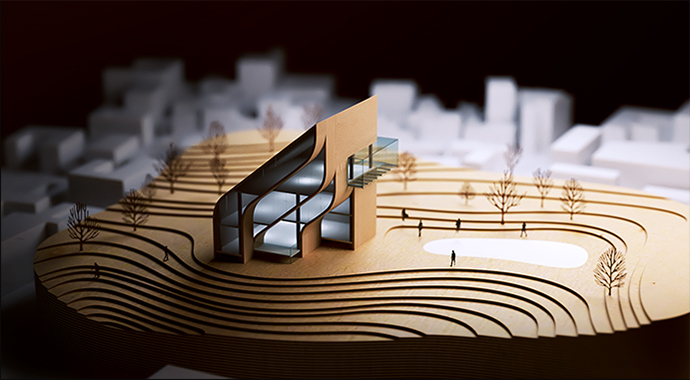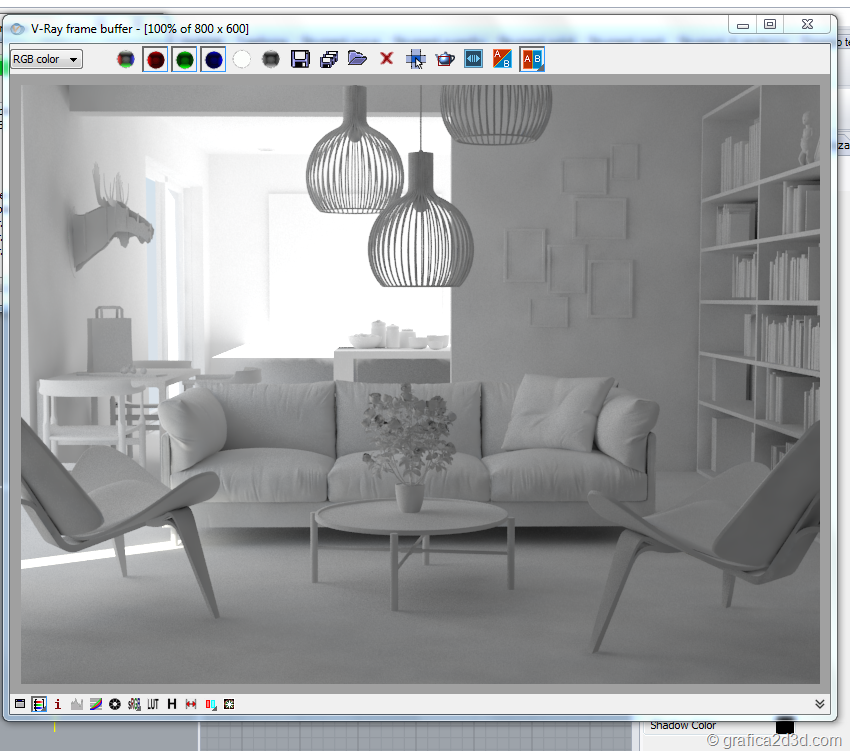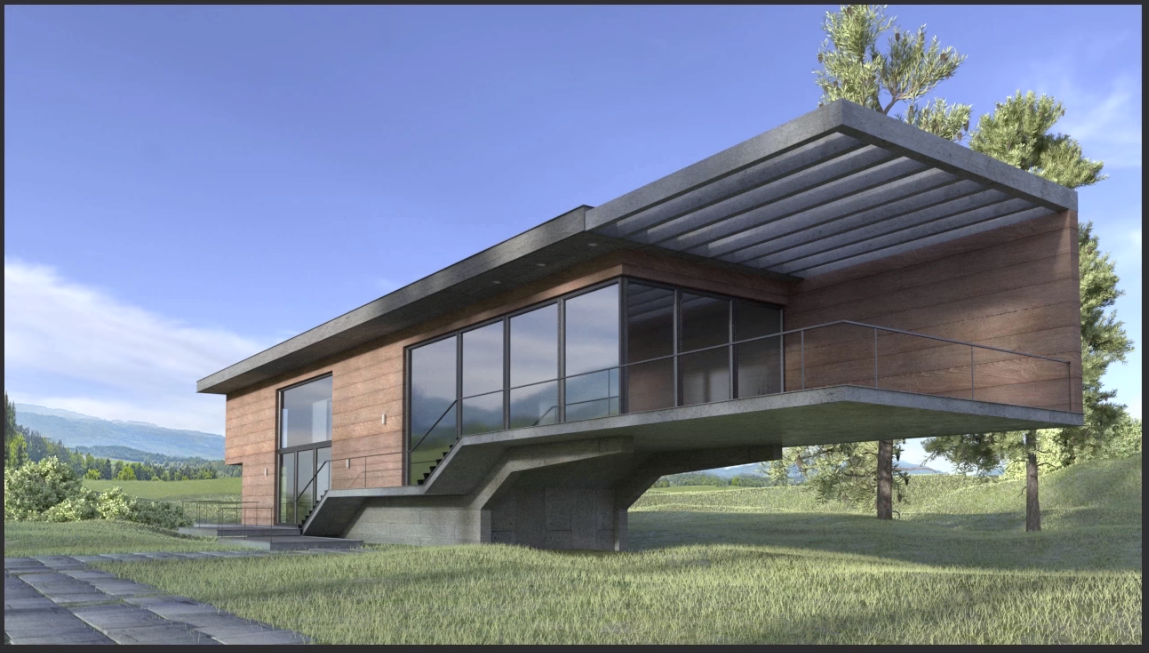

The left-most triangle controls the cutoff value for the minimum color “black”. That is adjust the upward poining triangles below the color histogram. Select the icon in the lower left-hand corner of the V-Ray frame buffer window and use the “Levels” option in the V-Ray frame buffer in the expanded dialag box to adjust light balance. The initial result will appear to be overexposed.Ħ. You may wish select “Hosek et al” in the dialog box and then change over to “Preetham et. Note that the default ‘Sky model” is “Hosek at al”, a particular simulation method, and one of three options available. Switch the Sun from “/Rhino Document Sun” to “/Sun Light” (the V-Ray sun) and set the “Turbity” (i.e, quality the air) to 2.0. The dialog box on the right-hand side will change as in the following image.Ĥ. Select the symbol wih horizontal lines on the right-hand size and choose the “sky” option from options that appear to the upper left of the dialog box. An expanded dialog box that opens to the right. Within the V-Ray Asset Editor, go to the “Environment” tab, turn on the GI Skylight option by selecting the checked-box (see checked-box in the screen capture below), and then also select the blue and black checker-box icon to the right of the checked-box. Note that the “sun” symbol is visible as an 3D arrow in the foreground of the “Perspective” view window below.Ģ.

With the mouse cursor placed with the left-mouse button in the command prompt area, select the return key or right mouse button to place the sun light symbol at the origin of the x-y plane. Adjust the perspective view similar to an eye-level camera position and horizon line as shown in the “Perspective” view window below. Select OK in the dialog box above and then at the Rhino command prompt note that the default location of “Position ” is indicated. Within the “Sun Angle Calculator”, set the Sun Options to “On”, and determine the time and day of the year, as well as set the location either by picking a city (e.g., Richmond, VA) or entering the exact latitude and longitude.Īlternatively, as we did in the workshop, select the “Manual Control” method and used the simpler dialog box as shown below to adjust the azimuth and altitude more directly. Next, go to the “V-Ray Lights” panel and select sun control icon to open “Sun Angle Calculator”. Go to non-V-Ray Rhino Render Tab, and toggle off the standard Rhino “sun” symbol. Within Rhino, go to the menu item “Render>Current Renderer>V-Ray for Rhino” to ensure that V-Ray is active. The “sunlight” layer will be used to place a V-Ray sun.
#Vray rendering for rhino tutorial manual
Some documentation used to develop this tutorial are published on line in the vV-Ray for Rhino manual published on-line at:Ĭreate a Rhino File with a ground surface, catenary curve generated vault such as was done in the catenary curves and vault tutorialand add a layer for a sunlight and create the 3d model below. There are a number of options availble for determining the the general atmosphere assocaited with rendering, light and shadows studies. Some documentation used to develop this tutorial are published on line in the V-Ray for Rhino manual published on-line at:įor more general on-line tutorials and reference materials on V-Ray see Įnvironment Settings, Sun, Sky and Texture Mapping For large images like this one Do Not use the Virtual Frame Buffer (VBF) and Save the file from it.There are a number of options availble for simulation the general atmosphere associated with rendering light and shadows and materials. This will ping the servers to get their IP addresses and determine whether you have access to them or not.ġ1. Calculate these from the Image Size Resolution and the number of nodes available.Ħ. So the Width and Height are set to 200 and 200, respectively.Ĥ. Here I am rendering a 2000:2000 image with 10 nodes. Divide the nodes into your X:Y resolution to give you the Width (X) and Height (Y) divisions. First, you Size Resolution (X:Y number of pixels) and the number of nodes you have available for the rendering.

NOTE: To determine the Region Division Width and Height you should take into account two things. Distributed Renderings and Enable Asset Collection. Main Menu > VRay > Options > Systems Tab.
#Vray rendering for rhino tutorial how to
How to use VRay for Rhino Distributed Rendering.ġ. VRay for Rhino Distributed Rendering Procedure Fall 2011


 0 kommentar(er)
0 kommentar(er)
